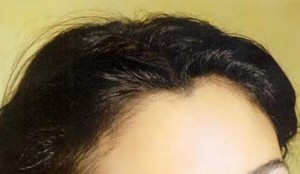Posts Tagged ‘Los Angeles hair transplant’
Wednesday, November 7th, 2012
 Hair loss is correlated to stress. Hair loss induced by stress usually occurs after severe stress, such as surgery or illness. Stress and hair loss don’t have to be permanent. Getting your emotional stress under control or alleviating a physical stressor usually results in your hair growing back. Hair loss is correlated to stress. Hair loss induced by stress usually occurs after severe stress, such as surgery or illness. Stress and hair loss don’t have to be permanent. Getting your emotional stress under control or alleviating a physical stressor usually results in your hair growing back.
Sudden hair loss can signal an underlying medical condition that requires treatment. If needed, your doctor may suggest treatment options for the hair loss as well. And if efforts to manage your stress on your own don’t work, talk to your doctor about stress management techniques. Be sure to consult a physician if you notice sudden or patchy hair loss or more than usual hair loss when combing or washing your hair.
Stress is defined as “a demand upon physical or mental energy.” A physical or emotional demand that is a person is finding difficult to overcome. Stress puts demands on people to perform well above their capacity. Stress has a negative perception and connotation, however, stress is an everyday occurrence that affects most people at some time in their life. This longer the duration of the demand the more difficult it is to maintain without relief.
Stress can also be:
- Stress is can be a recent phenomenon and is everywhere we turn to
- Stress does not feel good; it is not experienced in pleasant situations
- Stress exists when problems go out of control
Dr. Daniel K. Hall-Flavin, M.D. of the Mayo Clinic points out that three specific hair loss conditions are related to stress.
- Alopecia areata. A variety of factors are thought to cause alopecia areata, possibly including severe stress. With alopecia areata, white blood cells attack the hair follicle, stopping hair growth and making hair fall out.
- Telogen effluvium. In this condition, emotional or physical stress pushes large numbers of growing hairs into a resting phase. Within a few months, the affected hairs may fall out suddenly when simply combing or washing your hair.
- Trichotillomania. Trichotillomania (trik-oh-til-oh-MAY-nee-uh) is an irresistible urge to pull out hair from your scalp, eyebrows or other areas of your body. Hair pulling can be a way of dealing with negative or uncomfortable feelings, such as stress, anxiety, tension, loneliness, fatigue or frustration.
When experiencing hair loss an evaluation by a Los Angeles hair restoration doctor can be very helpful.
Tags: Dr. Mohebi, hair loss, Los Angeles hair transplant
Posted in Dr. Parsa Mohebi, General Information, Hair Loss Conditions | No Comments »
Tuesday, November 2nd, 2010
Dr. Mohebi is the medical director of US Hair Restoration’s hair transplant centers in Southern California. With offices centrally located amongst the major cities of Encino, Beverly Hills, Orange County, San Diego, and San Francisco, CA, Dr. Mohebi has made himself available to almost every major part of the California’s population. In addition, Dr. Mohebi is the author of Hair Restoration Blog where he responds to the questions/concerns of many aspects of hair loss and hair restoration. In addition to his blog where Dr. Mohebi answers basic questions regarding hair loss and hair restoration, the doctor has also been interviewed (for the second time) by Hair Care Beverly Hills of Buzymoms.com
Below you can see some of Dr. Mohebi’s main responses to questions posed by the interviewer.
In response to the question of whether or not clients are eligible whom have already had hair restoration and are unhappy with the results, the doctor responded: Yes, hair transplant repairs are possible and are a good portion of the hair transplant surgeries performed in our Southern California offices (mainly located in Beverly Hills, Encino,Orange County, and San Diego hair transplant consultation). Many people may have unnatural results from previous hair transplants due to the older techniques (such as plug surgery), but some may even have problems with recent hair restoration procedures due to technical issues or lack of proper judgment on the part of the hair transplant surgeon. In most situations, the repair is easy and can be done in one to two sessions.
In regards to the question of whether or not there is a minimum age requirement for hair restoration, Dr. Mohebi stated: It is not unusual for a hair transplant surgeon to discourage a person younger than 24 from pursuing a hair restoration surgery. However, nowadays microscopic techniques being used to evaluate the miniaturization of susceptible hair can assist surgeons in predicting the final pattern of hair loss. By being able to predict each patient’s final balding stages, we are able to see where the pattern of baldness is heading and based on that, we can now recommend hair transplant surgery at an earlier age.
When asked about the donor scar following a hair transplant and whether or not it will be visible, Dr. Mohebi responded: If you do not plan on shaving your hair after your hair transplant surgery, your donor wound will never be visible. However, if you plan on shaving your head for any reason, you may choose to have a FUE or Follicular Unit Extraction procedure done rather than the general FUT procedure through removing a strip from the donor area. FUE transplant eliminates the visibility of a linear scar on the back of your head and is the best option for patients who plan on shaving their head or keeping their hair very short in the future.
To determine recommended options or graft numbers for your personal case, Dr. Mohebi suggests attending an in person consultation in any of his five California regional offices. In addition, he stated: Yes, the initial consultation with me (Dr. Parsa Mohebi) is complimentary in any of our California hair transplant offices in Beverly Hills, Encino, Orange County, San Diego, and San Francisco.
Lastly, the interviewer inquired as to what clients should bring with them to their free consultations and the doctor replied: Anything related to your hair loss and hair restoration, including family history of hair loss, other medical conditions that may have been attributed to ones hair loss, medical, surgical or even cosmetic changes that you like and may help you have a better result after a hair restoration procedure.
Tags: Beverly Hills Hair Restoration, Beverly Hills hair transplant, Dr. Mohebi, Encino hair transplant, fue, Los Angeles hair transplant, San Diego hair restoration, San Francisco hair transplant, southern california hair restoration
Posted in California hair transplant, hair transplant, hair transplant repair, men hair restoration, Orange County hair transplant, San Diego hair restoration | No Comments »
Thursday, October 1st, 2009
 In a recent article published in Dermatologic Surgery Journal, Dr. Nausbaum et Al discusses naturally occurring female hairlines. His study was based on a large panel of normal women for the purpose of comparing and contrasting hairline variables to attain the perfect female hairline. Given that male hair restoration has almost always been the focus of hair restoration this new information can help benefit women who are candidates for hair transplant surgery. In a recent article published in Dermatologic Surgery Journal, Dr. Nausbaum et Al discusses naturally occurring female hairlines. His study was based on a large panel of normal women for the purpose of comparing and contrasting hairline variables to attain the perfect female hairline. Given that male hair restoration has almost always been the focus of hair restoration this new information can help benefit women who are candidates for hair transplant surgery.
The author came up with a guide or type of blueprint to help determine the best hairline for a woman. This guide was based on the average recorded parameters in women with healthy, non-balding hair. Among a panel of 360 women, the most dominant feature found in 81% of the women was in fact the presence of the widow’s peak. In addition, around 90% of these women also showed lateral mounds.
It’s great to know that there is now a bigger emphasis in hair restoration for women with more viable information and techniques to help solve their hair loss. Our hair transplant surgical offices already specialize in female hairline reconstruction in women suffering from female patterned hair loss or male patterned hair loss. This technique has also been applied on transgender (male to female) patients to help soften and alter their masculine features.
We at our California offices of US Hair Restoration perform transgender hair transplants regularly and I personally believe that hair restoration is one of the most key procedures in sex reassignments process for transsexuals.
Tags: female hair line, female hair transplant, female hairline, hair loss treatment, hair transplant surgery, Los Angeles hair transplant, men hair loss, natural female hairline, transgender, transgender hair transplant, transsexual, widow's peak, woman hair restoration, women hair loss
Posted in California hair transplant | No Comments »
Wednesday, March 11th, 2009
 It is not uncommon for us to receive emails asking about celebrity hair loss and hair transplants. Many within the media or regular fans will usually ask a hair transplant surgeon about their favorite actor or actress and whether or not they have had a hair transplant procedure with us or elsewhere. It is not uncommon for us to receive emails asking about celebrity hair loss and hair transplants. Many within the media or regular fans will usually ask a hair transplant surgeon about their favorite actor or actress and whether or not they have had a hair transplant procedure with us or elsewhere.
This is all relatively normal considering we operate our business in Los Angeles and Beverly Hills. Of course, we cannot disclose any information of any artist that has had a hair transplant unless they consent to releasing that information but gossip and the paparazzi are ever vigilant in the world of Hollywood.
It is astonishing how many hits a single celebrity can get just by typing their name in and even more so of those rumored to have had hair restoration done. It is also unfortunate when their hair systems can be recognized fairly easily. Wigs and hair systems have come a long way in the sense of realism but with today’s high definition and high resolution technology and cameras, they can easily reveal what is meant to be concealed. There are many celebrities whom may have had old technique hair transplants which are easy to detect and are now bound to a certain hair style just to cover their unnatural hairline.
Fortunately many of these old technique procedures can be corrected using new technology follicular unit transplant as long as their donor hair was not violated or completely depleted by their old technique surgeries.
California and its star-struck cities like Los Angeles, Beverly Hills and Hollywood are notorious for its high standards for good looks and good health. It is also very concentrated in terms of the number of hair transplant surgeons and cosmetic surgeons. This is why many artists caught up in the world of fashion; art and entertainment consider all methods of cosmetic surgery and hair transplant surgery and hair restoration.
Tags: Beverly Hills hair transplant, Hollywood hair transplant, Los Angeles hair transplant, wig
Posted in California hair transplant, men hair restoration | No Comments »
|
|
 Hair loss is correlated to stress. Hair loss induced by stress usually occurs after severe stress, such as surgery or illness. Stress and hair loss don’t have to be permanent. Getting your emotional stress under control or alleviating a physical stressor usually results in your hair growing back.
Hair loss is correlated to stress. Hair loss induced by stress usually occurs after severe stress, such as surgery or illness. Stress and hair loss don’t have to be permanent. Getting your emotional stress under control or alleviating a physical stressor usually results in your hair growing back.

